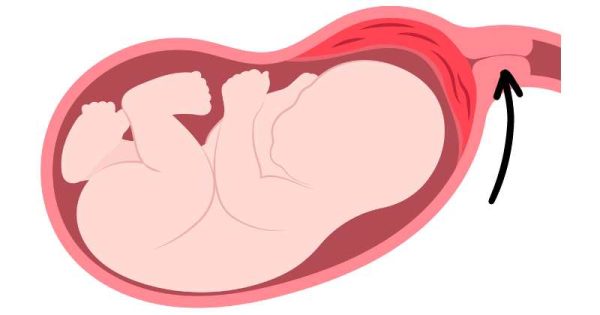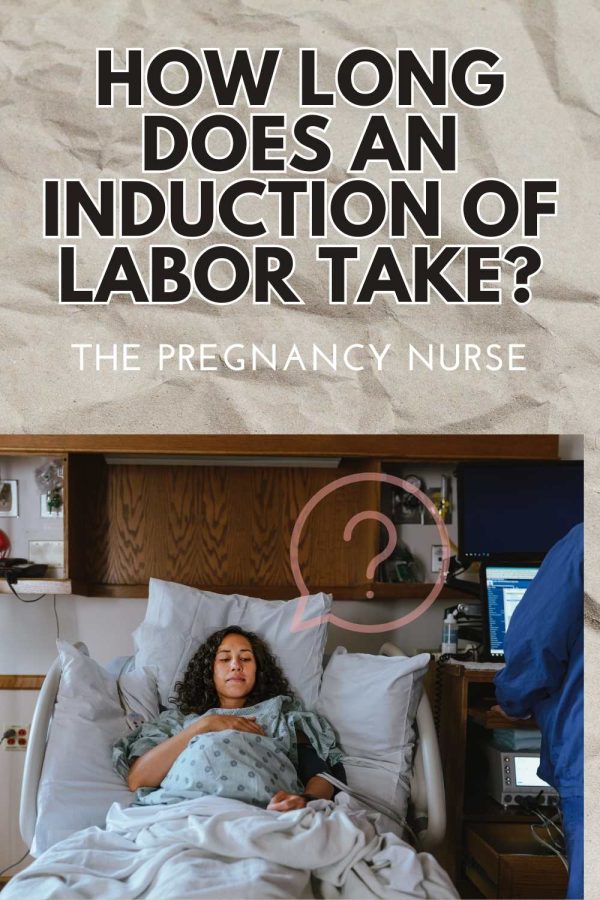👋 I’m so glad YOU are here. Are you looking to also get your partner prepared? This is for BOTH of you. Couples just love it and I know you want to both feel prepared!
You may hear that you have an “unfavorable cervix” and you have no idea what that means…. Let’s talk about what it does mean in regards to an induction or your labor.

Before we get started, hi — I’m Hilary — The Pregnancy Nurse® 👩⚕️. I have been a nurse since 1997 and I have 20 years of labor and delivery experience, I am also the curly head behind Pulling Curls and The Online Prenatal Class for Couples. 🩺 I have had a LOT of patients ask me what it meant when their doctor said it, so I’m a great resource on this one.
Pro Tip: If your provider says a term you don’t understand, just ask them what it means. The medical world has LOTS of weird terminology (this one is part of that), and we sometimes use the words without thinking but we’re always happy to share what it actually means!
What is an Unfavorable Cervix
It means that your cervix doesn’t seem “ready” to go into labor. We’re taking a few indicators into account when we decide a cervix isn’t favorable:
- Dilation — how open your cervix is (measured in cm)
- Effacement — how thinned out your cervix is (measured as a %)
- Position — where in your vagina is the cervical opening (more forward is usually better)
- Station — how high/low in your pelvis the baby is
- Consistency — how your cervix feels. Is it hard like a rubber tire, or soft like brie?
When your cervix is early in many/most of those factors it tends to be “unfavorable”.
In all reality the term favorable really can be used ambiguously by a provider. Better is the Bishop Score which is an actual rubric for how ready your cervix is for labor.
It gives 2 points in each of those categories, and if you’re over 8 your cervix is considered more ready for labor. Learn more about the bishop score here.
I prefer the bishop score because it just takes out ambiguity and provider preferences.
So, let’s say that your cervix is closed, it’s 50% effaced, it’s posterior in your vaginal canal, the baby is very high in your pelvis and it feels hard — that’s an unfavorable cervix. It is a bishop score of 1.
However, let’s say your cervix is 1 cm, it’s 75% effaced, baby is still high, the cervix is mid-position, and feels soft’ish — that’s more favorable, but still not quite there — bishop score of 6.
And finally, if your cervix is 3 cm, your cervix is 80% effaced, baby is next to the ischial spines in your pelvis, the cervix is anterior and soft, that’s a bishop score of 10.
Here is a study that showed that your bishop score combined with how many times you’ve been pregnant is a good indicator of how successful your induction will be (or if you’ll need a cesarean section).
Tight Sweater = Your Cervix Analogy:
It can be confusing. In our minds we’re either in labor or we’re not, but our bodies do prepare for labor in different ways. I like to compare it to the top of a very tight, and thick sweater.
As you start to push your head through the opening that sweater will start to come down over your head, the stitches will stretch and thin out. As you push your head further into the opening it will get larger and thin more. The same thing is happening with your cervix and the baby’s head.
Also, I like to think of the cervix like an avocado (perhaps it’s my love of guacamole) — how the avocado is hard until it’s ripened and then it softens up. The same thing is happening with your cervix.
Now, let’s get some chips and do our kick counts 🤣
Before we forge ahead, understanding how your cervix, your medical needs and your own needs work together to help you make a choice can be a hard decision.
Understanding the whole picture is something that The Online Prenatal Class for Couples can really help you do. Because it goes from pregnancy, clear through postpartum it really gives you a much bigger view on what to expect (vs just what your cervix says right now).
What does it mean for my induction?
In general, this only matters when we are scheduling you for an induction.
If your cervix isn’t favorable, it means you’re likely going to have a longer induction (I have a whole post on how long your induction will be)
If it is favorable labor will hopefully be shorter.
Of course, this is just hopes and wishes (and guesses). I’ve seen very unfavorable cervixes open in record time, and I have seen favorable ones be stuck closed.
It’s mostly just a guess.
Also, if your cervix isn’t favorable we’ll want to try something like Misoprostol (also called Cytotec) or Cervidil before we go straight to Pitocin.
It does also mean that you have a higher chance of “failing” your induction (meaning you have a C-section, or get sent home). Some cervixes are so rock hard they just won’t open and if baby needs to come out we would need to do a C-section. Cases like this are mostly due to:
- Small baby (IUGR) or baby growth issues
- High blood pressure or preeclampisa
- Mom’s Illness
- Other medical reasons that baby needs to come out (see here for more reasons we induce early).
However, if baby does not need to come out, we could send you home and see if your cervix will ripen a bit with time.

Does it mean I won’t go into labor for a while?
Your provider may use similar terminology if they check you in the office and feel like it doesn’t feel like you’re going into labor any time soon.
Of course, cervixes can change at a moment’s notice, water can break. You just can’t count on anything in pregnancy, but it’s just an educated guess.
If it’s favorable, will I have my baby soon?
Not always. I was 5 cm for a couple of weeks, my uterus just wanted to hold onto that baby for a long time. But, if your cervix is pretty open, soft and baby’s lower in your pelvis you’ll likely go into labor soon (but soon may be a couple of weeks).
How can I get a favorable cervix?
Well, in the hospital we use prostaglandins like Misoprostol or Cervidil to ripen your cervix. Essentially that means the hormones tell your cervix to chill out, and smaller contractions from your uterus help to soften it and push baby’s head into the cervix a bit (hopefully also softening it).
At home, you can try penetrative sex (semen has similar hormones, but not at the same dosage), but in reality there isn’t much that will put you into labor besides your brain, your baby and your uterus deciding it’s time to be done. I talk about that more in here.
Here are a few things to remember about a favorable cervix:
- It’s all sort of a guess, sometimes cervixes surprise us (but, mostly they don’t)
- An unfavorable cervix can be very favorable in just a few hours — it doesn’t take long
- It doesn’t mean ANYTHING about how you’ve kept that baby in there, just what mood your cervix is in.
So, don’t take it personally…. but what you SHOULD take personally is getting prepared for your labor, birth and life after baby. I recommend this class. It truly is the easy way to get prepared for your birth!
And, if you’re not quite sure you’re ready for that whole thing, check out my free prenatal class. It’s your first step toward getting in the driver’s seat of your birth.







 How to Be a Supportive Husband and Partner During Pregnancy
How to Be a Supportive Husband and Partner During Pregnancy
